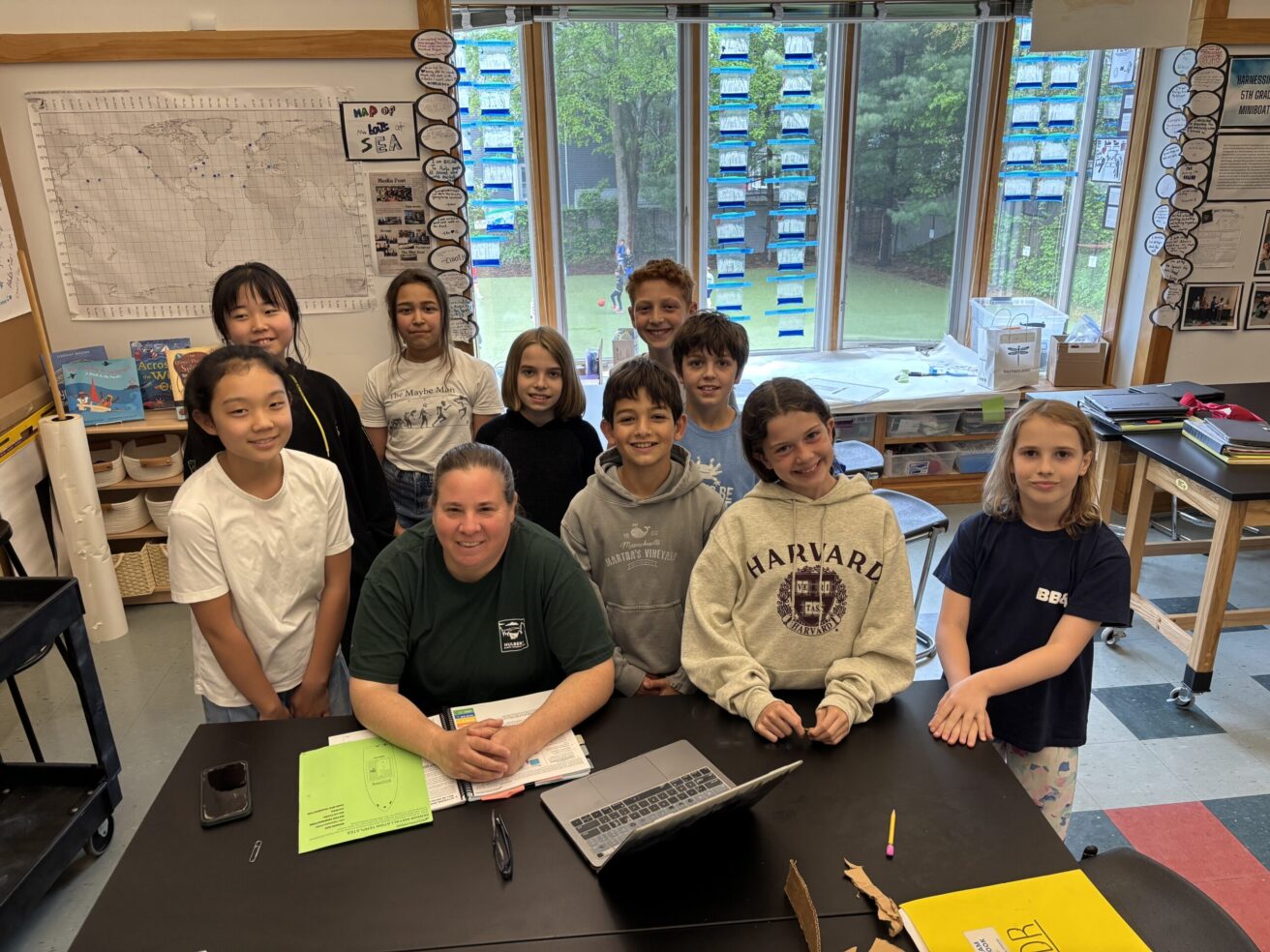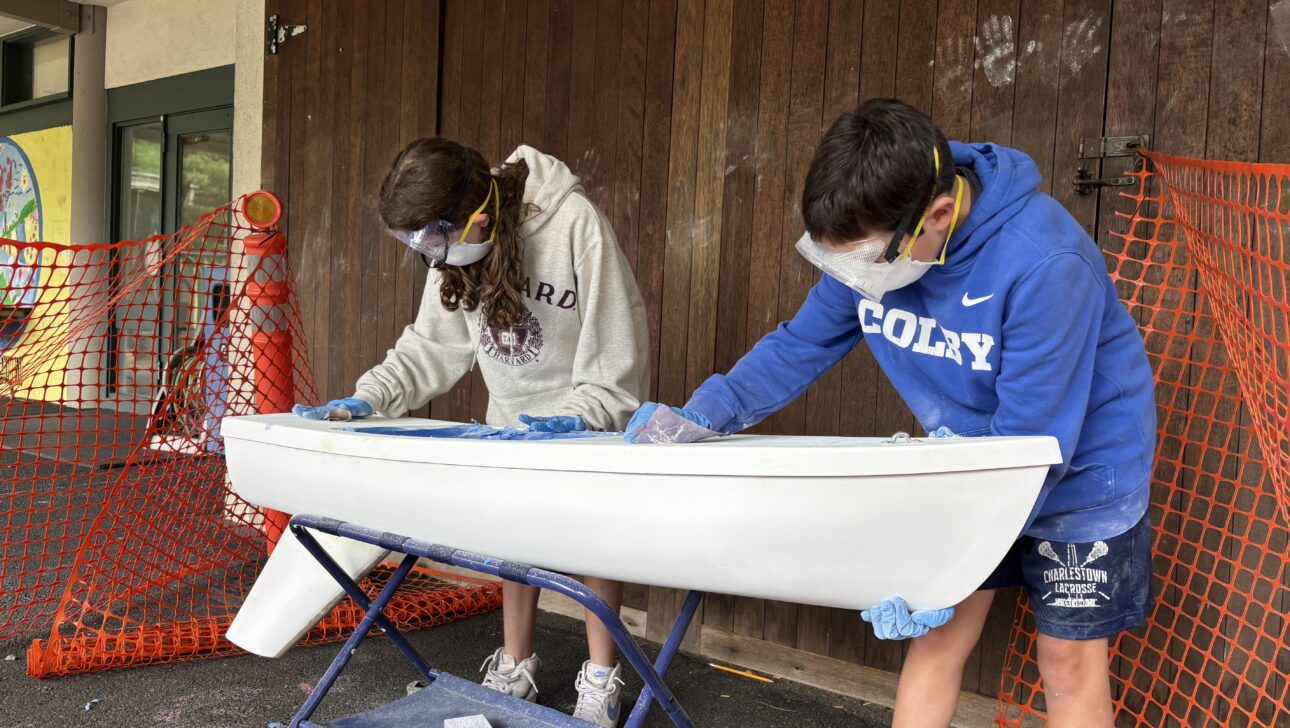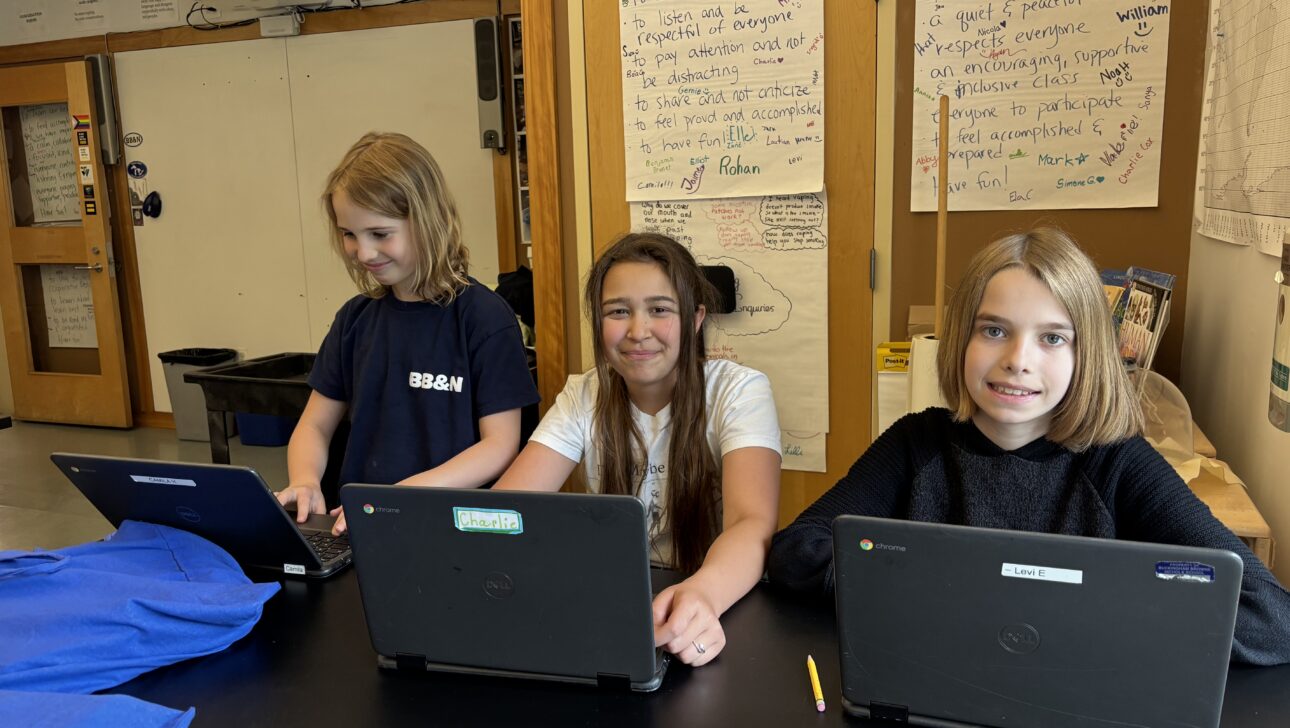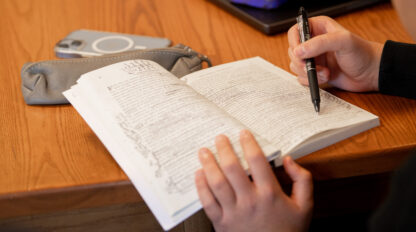Grade Five Miniboat Project Sets Sail at BB&N

The 2024-2025 school year witnessed an exciting first in BB&N’s fifth-grade curriculum. Through an exciting collaboration with the nonprofit Educational Passages, science teacher Lauren Rader’s class began work on a seafaring vessel that will sail the ocean collecting important data, and potentially connecting students to other cultures and people. Known as “Miniboats,” the project utilizes a wide spectrum of skills to build, outfit, calibrate, and launch a five-foot fiberglass boat into the ocean where the currents will carry it to unknown shores, gathering useful intel along the way.
“Before I came to BB&N I worked in science education, so I’ve known about the Miniboat project for at least ten years,” says Rader. “It’s something I’ve always wanted to do here because it aligns perfectly with the fifth-grade science immigration/migration curriculum (how and why things move, including people), so it
felt like a natural fit.” Prior to last year, the issue had been the investment cost, but with the BB&N Teaching and Learning Office’s recent Innovation Grant program, Rader was able to apply for and receive the funding to get the project moving. BB&N’s boat, aptly named “Knight Raider” will be the 162nd boat launched since the program began in 2008. Of those 162 boats, 16 are still currently active, including one from Connecticut that has crossed the ocean four times, visiting Ireland, France, Cuba, Western Sahara, and the U.S. Rader’s students have high hopes that their own entry will see several trips once launched. Although the initial plan was to launch their boat before the end of last school year, the funding schedule demanded that BB&N begin work on their boat in February as opposed to October, so a launch this year is the hope.
As Rader and her students discovered, it takes a lot of planning and time to finish the work. “The students completely bought into it,” notes Rader proudly. “We knew we’d hit some roadblocks, but they have persevered. The biggest challenge we’ve faced is giving everyone a chance to choose the piece they were interested in working on, and keeping the communication lines open between all the groups responsible for different aspects of the project.”
The class was divided into teams, with each having specific responsibilities: the Media team, the Tech team, the Launch team, the Hull and Keel team, the Deck team, the First Mates, the Cargo team, and the Sail team. Some built the boat, some designed and constructed the sail, and others outfitted the equipment— which includes a video camera, a solar panel, a GPS unit, water temperature gauges, air temperature gauges, a sensor box, and more.
“Our plan is to have the boat land in another country where people will see our letters and posters, and relaunch the boat,” says Zane Hafez ’32. “And the hope is to track ocean currents and the temperature of water and air.”
“There are instructions in the boat of ways to contact us,” adds Elliot Hodess ’32. “So hopefully anyone who finds the boat will Zoom with us, and we can give them directions on how to relaunch it.”
But a lot needs to happen before that bridge is crossed. Beyond the physical and technical aspects, there is the matter of actually getting the boat into the water. As the school year closed, the Launch team was still navigating the logistics of transporting the boat across the country and deep into the ocean currents of the Pacific.
“Our boat needs to be 300 miles out to sea when launched so it can catch a current, so my team is working on finding a way to get the boat out that far,” explains Levi Epstein ’32. “We’ll need to partner with a larger boat, or maybe look into an East Coast launch if that’s easier.”
Given the determination and capabilities of Rader and her students, it seems the boat’s maiden voyage hinges on the question of “when” and not “if,” so stay tuned this year for a voyage worthy of Marco Polo himself. Bon Voyage, “Knight Raider!”




